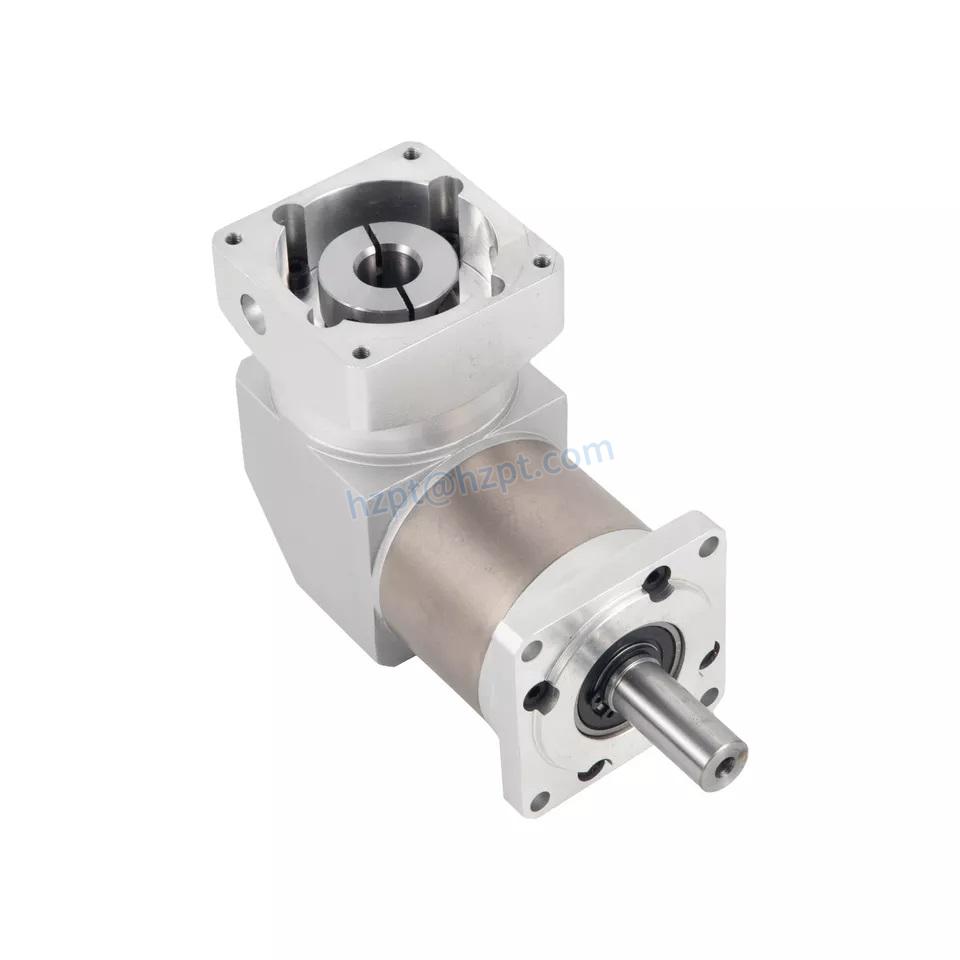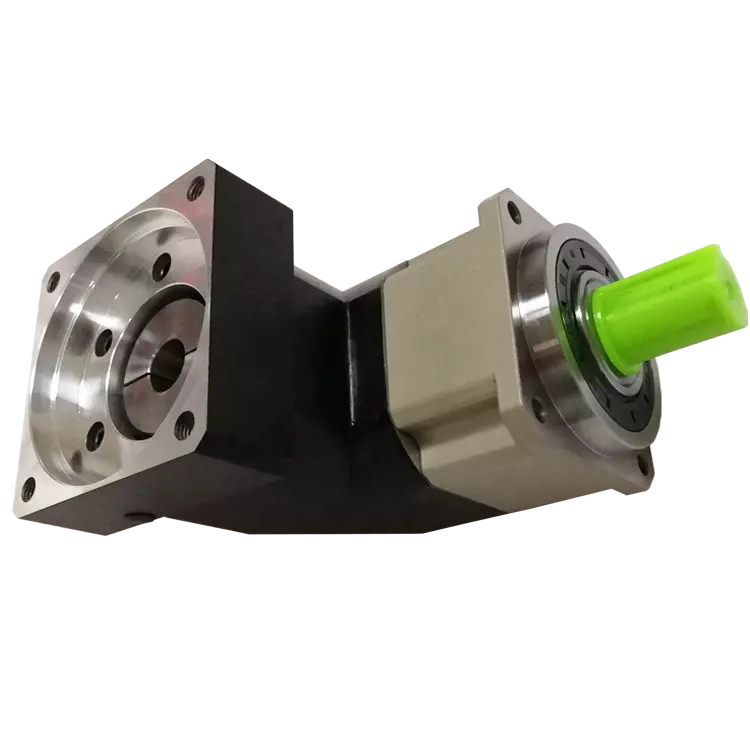Product Description
General Specification:
Step Angle Accuracy: ±5%
Resistance Accuracy: ±10%
Inductance Accuracy: ±20%
Temperature Rise: 80°C Max
Ambient Temperature: -20°C~+50°C
Insulation Resistance: 100MΩ Min., 500VDC
Dielectric Strength: 500VAC for 1 minute
Shaft Radial Play: 0.02Max (450g-load)
Shaft Axial Play: 0.08Max (450g-load)
Max. radial force:220N (20mm from the flange)
Max. axial force:60N
Specification:
nema 34 closed loop stepper motor
| Model No. | Step Angle | Motor Length | Current /Phase |
Resistance /Phase |
Inductance /Phase |
Holding Torque | # of Leads | Detent Torque | Rotor Inertia | Mass |
| ( °) | (L)mm | A | Ω | mH | N.m | No. | Kg.cm | g.cm2 | Kg | |
| 86HS78-6004XBJED-0.35M | 1.8 | 78 | 6 | 0.27 | 2 | 4.5 | 4 | 1.2 | 1400 | 2.8 |
| 86HS115-6004YBJED-0.35M | 1.8 | 115 | 6 | 0.36 | 3.8 | 8.5 | 4 | 2.4 | 2700 | 4.3 |
| 86HS155-6004YBJED-0.35M | 1.8 | 155 | 6 | 0.44 | 3.8 | 12 | 4 | 3.6 | 4000 | 5.9 |
Nema 34 stepper motor
| Model No. | Step Angle | Motor Length | Current /Phase |
Resistance /Phase |
Inductance /Phase |
Holding Torque | # of Leads | Detent Torque | Rotor Inertia | Mass |
| ( °) | (L)mm | A | Ω | mH | N.m | No. | Kg.cm | g.cm | Kg | |
| JK86HS68-5904 | 1.8 | 67 | 5.9 | 0.28 | 1.7 | 3.4 | 4 | 0.8 | 1000 | 1.7 |
| JK86HS68-2808 | 1.8 | 67 | 2.8 | 1.4 | 3.9 | 3.4 | 8 | 0.8 | 1000 | 1.7 |
| JK86HS78-5504 | 1.8 | 78 | 5.5 | 0.46 | 4.0 | 4.6 | 4 | 1.2 | 1400 | 2.3 |
| JK86HS78-4208 | 1.8 | 78 | 4.2 | 0.75 | 3.4 | 4.6 | 8 | 1.2 | 1400 | 2.3 |
| JK86HS97-4504 | 1.8 | 97 | 4.5 | 0.66 | 3.0 | 5.8 | 4 | 1.7 | 2100 | 3.0 |
| JK86HS97-4008 | 1.8 | 97 | 4.0 | 0.98 | 4.1 | 4.7 | 8 | 1.7 | 2100 | 3.0 |
| JK86HS100-6004 | 1.8 | 100 | 6.0 | 0.36 | 2.8 | 7.0 | 4 | 1.9 | 2200 | 3.1 |
| JK86HS115-6004 | 1.8 | 115 | 6.0 | 0.6 | 6.5 | 8.7 | 4 | 2.4 | 2700 | 3.8 |
| JK86HS115-4208 | 1.8 | 115 | 4.2 | 0.9 | 6.0 | 8.7 | 8 | 2.4 | 2700 | 3.8 |
| JK86HS126-6004 | 1.8 | 126 | 6.0 | 0.58 | 6.5 | 6.3 | 4 | 2.9 | 3200 | 4.5 |
| JK86HS155-6004 | 1.8 | 155 | 6.0 | 0.68 | 9.0 | 13.0 | 4 | 3.6 | 4000 | 5.4 |
| JK86HS155-4208 | 1.8 | 155 | 4.2 | 1.25 | 8.0 | 12.2 | 8 | 3.6 | 4000 | 5.4 |
/* January 22, 2571 19:08:37 */!function(){function s(e,r){var a,o={};try{e&&e.split(“,”).forEach(function(e,t){e&&(a=e.match(/(.*?):(.*)$/))&&1
| Application: | 3D Printer |
|---|---|
| Speed: | Low Speed |
| Number of Stator: | Two-Phase |
| Excitation Mode: | HB-Hybrid |
| Function: | Driving |
| Number of Poles: | 2 |
| Samples: |
US$ 100/Piece
1 Piece(Min.Order) | |
|---|
| Customization: |
Available
| Customized Request |
|---|

Customization of Angle Gearboxes for Industrial Needs
Yes, angle gearboxes can be customized to meet specific industrial needs and requirements. Manufacturers offer customization options to tailor angle gearboxes to the unique demands of various applications:
- Gear Ratio Selection: Gear ratio customization allows the gearbox to achieve the desired speed reduction or increase based on the specific application’s requirements.
- Mounting Configurations: Manufacturers can design angle gearboxes with various mounting options to ensure seamless integration into different machinery setups.
- Output Shaft Options: Customizing the output shaft design enables compatibility with specific components or systems.
- Sealing and Protection: Gearboxes can be customized with specialized sealing and protection mechanisms to ensure optimal performance in harsh environments.
- Materials and Coatings: Depending on the application’s demands, manufacturers can select appropriate materials and coatings for enhanced durability and corrosion resistance.
- Special Features: Custom features such as built-in sensors, lubrication systems, or noise reduction measures can be added to meet specific operational requirements.
Customization ensures that angle gearboxes can effectively fulfill their intended roles in various industries, from automotive and aerospace to robotics and manufacturing. By tailoring the gearbox design to match specific needs, companies can achieve optimal performance, efficiency, and reliability in their applications.

Selecting the Right Angle Gearbox for an Application
Choosing the appropriate angle gearbox for a specific application involves considering several key factors to ensure optimal performance and reliability:
- Application Requirements: Determine the required torque, speed, and power output of the gearbox to match the demands of the application.
- Input and Output Angles: Identify the desired input and output angles for the gearbox to ensure it can effectively redirect motion as needed.
- Space Constraints: Evaluate the available space to select a gearbox that fits within the allocated area.
- Gearbox Type: Choose the suitable gearbox type (e.g., right angle, bevel, worm, hypoid) based on the application’s specific needs.
- Load Conditions: Consider factors such as load variation, shock loads, and continuous vs. intermittent operation to determine gearbox durability.
- Environmental Conditions: Account for factors like temperature, humidity, and exposure to contaminants, which can affect gearbox performance and lifespan.
- Efficiency: Evaluate the gearbox’s efficiency, as lower efficiency may result in more energy consumption and heat generation.
- Mounting and Installation: Ensure that the gearbox can be easily mounted and integrated into the existing system.
- Maintenance and Servicing: Consider the ease of maintenance, accessibility to components, and availability of replacement parts.
- Budget: Compare the cost of the gearbox with its features and benefits to determine its overall value for the application.
By carefully considering these factors, engineers and designers can select the right angle gearbox that best meets the requirements of the specific application, ensuring optimal performance and longevity.

Handling Variations in Input and Output Angles with Angle Gearboxes
Angle gearboxes are specifically designed to handle variations in input and output angles, allowing for efficient redirection of rotational motion. They achieve this through the use of bevel gears and hypoid gears. Here’s how they handle such variations:
- Bevel Gears: Angle gearboxes equipped with bevel gears can handle changes in input and output angles by using intersecting axes. These gears have conical shapes and teeth that are cut along the cone surface. When the input shaft’s bevel gear meshes with the output shaft’s bevel gear, the intersecting angles allow for smooth power transmission even when the axes are not aligned.
- Hypoid Gears: Hypoid gear arrangements in angle gearboxes can handle larger variations in input and output angles compared to bevel gears. Hypoid gears have helical teeth and axes that are offset from each other. This offset allows for greater flexibility in handling non-parallel input and output shafts.
By employing these gear types, angle gearboxes can effectively manage variations in input and output angles, ensuring that rotational motion is smoothly redirected without compromising efficiency or causing excessive wear on the gears.


editor by CX 2024-04-22
